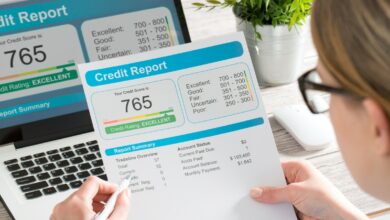It might have happened to you. Your credit rating looks good, but you are turned down when you apply for a loan or for a credit card. Understandingly, you are upset. You would like to know why you were refused credit when your score looked good. You also would like to know how you can improve your chances next time you apply for a loan.
Here are possible reasons for the refusal from myFICO, the consumer division of FICO, a data analytics company based in San Jose, Calif., which develops credit reports and provides alerts from all three credit bureaus.
• You are looking at a different score.
Ensure you are checking a FICO Score. Unless it is called by that name, it is not a FICO Score. Other models that score your credit rating might take into account factors that might be similar to the FICO score, but their calculations might be different. As a result, significant discrepancies can result.
• Your score might have been based on different data.
Although your score is based on information that is found in your credit reports, that information can vary from one credit bureau to another. As a result, if you check your FICO score using information from one bureau and the organization that can lend you money checks the score from another bureau the score might be different.
• The lender used a scoring model that is different.
Although your FICO score might meet the minimum standards in one version, it might fail to do so should the lender use a different version. Subtle differences can affect your score.
Other factors that can result in refusals.
Your FICO score is usually only one of other factors that lending organizations take into account when they assess your application for a loan. Your credit score might appear to be good, but other aspects of your financial situation or credit history might count against you.
• Employment
When some loans are considered it might be important not only that you are employed but also that you have a history of employment that is stable. Should you be self-employed you might have a tougher time getting approval for certain types of loans if you cannot show a history of self-employment that covers more than two years.
• Income
Lenders sometimes require you to earn a minimum amount. Should you fail to meet that requirement you might be seen as being unable to repay the loan.
• Ratio between debt and income
This ratio is the percentage of the gross amount you earn each month that is used for debt payments. Most loans will require that you have a debt-to-income ratio of 50%. When it comes to mortgages, however, you might have trouble getting approved if your overall ratio is greater than 43%. What is at stake is an assessment of your ability to repay the loan.
• Collateral
Should you be applying for a secured loan, such as that on an automobile or a mortgage, the value of the asset that you are using to secure the loan becomes significant. If the amount at which the car or house is appraised is way below the price you are paying for it, you might have trouble qualifying for the loan.
• Down payment
If you make a substantial down payment on a car or a house your chances of gaining approval for the loan are helped. A low down payment might not be enough to make up for other factors that are involved.
• Items on your credit report that are adverse
If you have a recent negative item on your credit report, such as a foreclosure or a bankruptcy, a lender might choose to deny your application. Lenders are required to tell you why they have refused your loan; you can dispute the information if you believe that it is incorrect.
How to improve your chances of obtaining credit
Should you be refused credit, it is better to wait awhile before applying again. You can take steps, however, to improve your chances of being approved next time you apply.
• Review the reasons your loan application was refused.
Doing so will provide you with information on issues that you will need to address before you apply again for a loan.
• Review your credit reports
If you are denied a loan you are entitled to obtain a free copy of your credit report within two months. You also can obtain a free copy of your credit report from each bureau through AnnualCreditReport.com. Check out that information and see whether there are areas you can address or whether you need to dispute information that is fraudulent or inaccurate.
• Act to improve your rating
Go over the situations that are harming your chances of obtaining credit. Take steps to improve the situation. It might involve effort and time, but doing so will be worthwhile in the end. You might need to take such steps as paying down your credit card balances and settling payments that are past due.
• When you cannot wait
You might feel you need to obtain credit quickly and cannot wait to take steps to improve your rating. In that case, you might need to apply for a loan or credit card that is more flexible when it comes to the credit requirements that come with it. You likely will pay higher fees and interest rates. If it is urgent, however, you might have no choice.
A benefit of taking such a loan is that paying off your new account will help you to establish a credit history that is positive.






